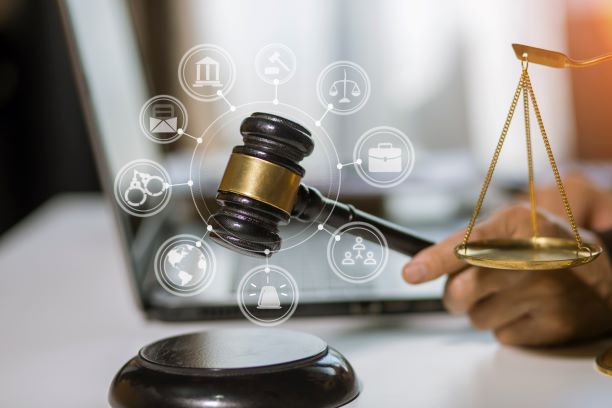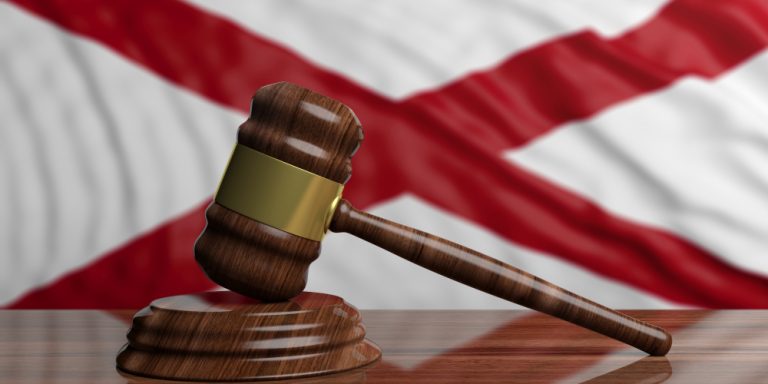Revisiting The Fax Provision: Technology’s Impact On TCPA
Revisiting The Fax Provision: Technology’s Impact On TCPA
Originally published in Law360, Expert Analysis, July 24, 2018
There has never been a more opportune time to seek a fundamental change in the manner in which the fax provisions of the Telephone Consumer Protection Act are interpreted and enforced. There is a widespread consensus that the fax sections of the TCPA, when enforced via class actions, produce far more harm than good. In Bridgeview Health Care Center Ltd. v. Clark,[1] the court characterized the TCPA as a “cash cow for plaintiff attorneys, while plaintiff attorneys take a big cut,” suggesting “Congress likely should have targeted the marketing firms, rather than their unsuspecting clients.”
Further, traditional faxes are largely an anachronism from the previous millennium. In Bais Yaakov of Spring Valley v. Federal Communications Commission,[2] the D.C. Circuit opinion began with Judge Brett Kavanaugh stating “believe it or not, the fax machine is not yet extinct.” This statement was clearly directed toward the dominance of the internet over the fax machine. Applying the TCPA fax provisions to e-faxes and similar communications that are received as emails is like applying equestrian regulations to modern automobiles. However, the change in the FCC leadership and two recent opinions by the D.C. Circuit suggest that a fundamental change in TCPA fax litigation is occurring. The basis for this change is the recognition of the rapid technological higher degree of scrutiny and the willingness of the D.C. Circuit to limit the FCC’s rules and orders to the scope of the statute.
In Bais Yaakov, the court of appeal held that the FCC rule requiring opt-out language for solicited faxes was ultra-vires because the unambiguous language of the relevant section of the TCPA applied only to unsolicited faxes.[3] Judge Kavanaugh emphasized that the question is not whether the statute prohibited the FCC inclusion of solicited faxes, but whether the FCC regulation was authorized by Congress.[4]
Even more recently in ACA International v. FCC,[5] the D.C. Circuit rejected the FCC definition of automatic telephone dialing system, or ATDS, and restricted the permissible scope of the definition of “capacity” under the TCPA regarding automated dialing. The FCC’s interpretation of “capacity” was so broad that it would include any smartphone that could download commonly available applications.[6] The court concluded that the FCC’s “potential functionality” test was arbitrary and capricious because it would result in virtually any smartphone being treated as an ATDS under the TCPA, making the vast majority of Americans potential violators.[7] The court held that the FCC’s definition of “capacity” was “unreasonable and impermissibly expansive” because of the agency’s lack of explanation of its different treatment of equivalent circumstances.[8]
The FCC took the position that a device could fall within the definition of an “autodialer” even if the phone had no capacity itself to generate random or sequential numbers,” but instead relied upon an “externally supplied set of numbers.”[9] The FCC uses the same argument regarding “capacity” for computers when applying the fax provisions of the TCPA — that they can act as facsimile machines when a printer is attached (smartphones do not have to be connected physically to a printer to print an electronically sent “fax” so they are fax machines and computers, under the FCC’s definition). Finally, the court also suggested that perhaps the more important question was whether the “capacity” was used causing injury.[10] The court seemed to advance the quaint notion that the statutory language imposed a causation requirement before bankrupting a company with the imposition of minimum statutory recoveries.
In 1991, when the TCPA was first enacted, facsimiles were an ascending technology growing explosively, allowing advertisers to shift advertising costs to recipients. The injuries associated with faxing were primarily of two kinds (1) fax advertisers could shift the cost of advertising to unwilling recipients at a cost of as much as $100 per recipient; and (2) tied up fax machines and sometimes phone lines. [11] Today, the fax machine has become an antiquated technology completely surpassed by the internet and other innovations.[12] Additionally, the current costs of receiving a fax have dropped dramatically, and the chance of interference has all but been eliminated by digital phone lines.
The FCC is considering several petitions that raise the issue of whether e-faxes and more recent variations of electronic communications should be treated as facsimiles under the TCPA. Almost all of these communications are received as an email via computer, rather than as a traditional fax. These petitions raise the “new technology” defense arguing that e-faxes and similar communications that are functionally equivalent to emails should be treated as emails. The arguments are based on the clear language of Section 227(b)(1)(C) of the TCPA which covers computers sending faxes, but excludes computers receiving faxes from the coverage of the act. Treating an e-fax type communication as a facsimile under the TCPA is inconsistent with the express language of the TCPA which states:
(b) RESTRICTIONS ON THE USE OF AUTOMATED TELEPHONE EQUIPMENT.
(1) PROHIBITIONS. — It shall be unlawful for any person within the United States, or any person outside of the United States if the recipient is within the United States —
* * *
(C) to use any telephone facsimile machine, computer, or other device to send, to a telephone facsimile machine, an unsolicited advertisement to a telephone facsimile machine, unless —
(emphasis added)
The substantive provisions of the TCPA prohibit the use of a telephone facsimile machine, or computer or any other device to send a facsimile to a telephone facsimile machine.[13] In other words, Congress made a clear distinction between sending a fax by computer and receiving a fax by computer. A computer sending a fax has the potential to send tens of thousands of faxes automatically. Whereas only a traditional fax machine at the receiving end could cause the types of harms that Congress wanted to prevent. The statutory ultra vires argument that the FCC cannot treat “receipt” of an e-fax by a computer is compelling. The FCC has recognized that in interpreting a statute “we must construe statues in such a way to give effect, if possible, to every single word.”[14][15] Because receipt of e-faxes causes none of the injuries that the statute was intended to prevent, the inclusion of e-fax also raises serious constitutional issues that can only be avoided by reasonable interpretation of §227(b)(1)(C) of the act.
A large and growing number of “e-faxes” or similar variations may be initiated by a fax machine or a computer but are received in the manner of an email. These “emails” and other new technological forms have no impact on the recipient that is different from an email that originates from a computer and are in fact less burdensome than junk mail. However, the FCC in In the Matter of WestFax Inc.[16] chose to ignore how the “fax” was received, despite recognizing that it was essentially received as an email. The staff relied upon a 2003 FCC order that held that the TCPA fax provisions apply “to computers with attached fax servers or modems” accompanied by a statement that “faxes sent as an email over the internet are not subject to TCPA and the rules.”[17] The WestFax order went on to conclude that a fax that is converted to an email after it was sent is not removed from the reach of the statute, even if it is converted to an email and is received over the internet as an email.”[18] The FCC conceded that “while we understand that the harm to the recipient may be the same whether the e-fax begins as a fax or an email, only the communication that starts out as a facsimile are covered by the TCPA.”[19] The specific justification advanced was “e-faxes, just like paper faxes, can increase labor costs for businesses, whose employees must monitor faxes to separate unwanted and wanted faxes.”[20]
In contrast “… a fax attached to an email or a fax whose content has been pasted in an email message — is not subject to the TCPA.”[21] The explanation advanced for the FCC’s position was “[w]e share commenters’ concern that e-faxes could be used to avoid the TCPA” protections resulting in increased unwanted ads on their computers.”[22] (emphasis added). The fact that computers are not listed on the receiving end of the statute was ignored by the FCC.
Why does all this matter? Because a class cannot be certified if e-faxes or similar communications are excluded under the TCPA. No fax log or any administrative process allows a plaintiff or plaintiff’s expert to determine whether an “email” or a “fax” was received on a fax machine without a fact-driven individual inquiry. This issue is clearly the plaintiff’s burden since each class member will have exclusive knowledge of how the communication was received. Additionally, a class action does not change the substantive elements of a claim or shift the burden of proof.[23]
Plaintiffs have also argued that some e-fax type communications should be treated as traditional facsimile by reasoning that a computer is a fax machine if it has the “capacity” to print or scan words or pictures.[24] In other words, every computer is a fax machine if it can be connected to a printer.[25] This could not be Congress’ intent since the difference between a computer and a fax machine would be lost. Does anyone think that in 1991 (when the TCPA was enacted) that most computers did not have the “capacity” to be connected to a printer? Like the dialing issue raised in ACA International, the fax sections operative language requires as a precondition to finding liability that the fax was sent to a specific device, a “telephone facsimile machine.”
Further, the FCC’s concession that the effects are identical creates a significant number of obstacles for enforcing the fax statute at all. Under Central Hudson Gas & Electric Corp. v. Public Service Commission of New York[26] truthful commercial speech can only be restricted by the government meeting its burden of proof as to three district elements: (1) there must be a substantial governmental interest; (2) the limitation on speech must be directly and not remotely advance the governmental interest; and (3) whether the governmental regulation is more extensive than necessary to advance that interest.[27]
In order to understand how the Central Hudson test applies, it is necessary to identify the interest advanced by the government. It is clear that cost shifting and interference “with phone or fax lines” is the primary justification for that act. If the “e-fax” was actually received as an email, it cannot cause interference with phone lines, does not tie-up a fax machine, or use ink or paper (unless voluntarily printed). The only cost is the time to review or delete the document — just like an email or junk mail. The legislative history of the act demonstrates that this concern was not a primary reason for the enactment of the statute. The “fit” of the fax regulations are clearly insufficiently under- or over-inclusive since emails are not subject to the same restrictions, nor the disproportionate statutory minimum damages, despite a $500 to $1,500 per fax. Additionally, the minimal inconvenience of reviewing or deleting an email can justify its restriction under the First Amendment. In Bolger v. Youngs Drug Products Corp.[28] the U.S. Supreme Court considered a federal regulation that prohibited the sending advertising for contraceptives as junk mail. The Supreme Court held that the restraint was unconstitutional because “the short but regular journey from mailbox to trash can … is an acceptable burden, at least so far as the constitution is concerned.”[29]
Technological change has been so rapid that new forms of electronic communication arise that are not covered by the FCC’s current orders or rules. In Scoma Chiropractic PA v. Dental Equities LLC,[30] the court granted a motion to stay in a TCPA case so the FCC could reconsider its orders and rules relating to faxes, to the extent they were modified by the Bais Yaakov decision. The court also reasoned that the “FCC has not directly addressed the issues raised here with regard to sending and receiving faxes using cloud-based servers, raising a potential first impression interpretation for the FCC.”[31] The rapid change in technology requires the FCC to conform its rules to its statutory limits and the shifting technological realities.
[1] 816 F.3d 935, 941 (7th Cir. 2016).
[2] 852 F.3d 1078 (D.C. Cir. 2017).
[3] 853 F.3d at 1082-83.
[4] Id. at 1082.
[5] 885 F.3d 687 (D.C. Cir. 2018).
[6] Id. at 693-94.
[7] Id. 695-701.
[8] 885 F.3d at 700.
[9] Id at 702.
[0] 885 F.3d at 764.
[1] Missouri ex rel Nixon v. American Blast Fax Inc., 323 F.3d 649, 655 (8th Cir. 2003).
[2] See Faxed, The Rise and Fall of the Facsimile Machine, Jonathan Coopersmith (2015) (John Hopkins’ University Press).
[3] 47 USC § 227(b)(1)(C).
[4] Quoting Williams v. Taylor; 529 U.S. 362, 404 (2000).
[5] See In the matter of Rules and Regulations of Implementing the TCPA. (June 26, 2003);18 FCC re’d 1404 (F.C.C.) 2003 WL 215178953 n. 436.
[6] 30 FCC Rec’d 8620 (Aug. 28, 2015).
[7] Id. at *3, ¶ 10.
7/24/2018 Revisiting The Fax Provision: Technology’s Impact On TCPA – Law360
[18] Id. at *3, ¶ 10.
[19] Id.
[20] Id. at 11.
[21] Id. ¶ 10.
[22] Id. ¶ 11.
[23] See Wal-Mart Stores Inc. v. Dukes; 131 S.Ct. 2541, 2561 (2011); 28 U.S.C. § 2072(b) (enabling act).
[24] 47 USC § 227(a)(3); WestFax, ¶ 11.
[25] WestFax, ¶ 9.
[26] 447 U.S. 557, 100 S.Ct. 2343 (1980).
[27] Central Hudson, 447 U.S. at 564.
[28] 463 U.S. 60, 68-69 (1983).
[29] Id. at 72.
[30] Case No.: 2:16-cv-41-Ftm-99-MRM, 2018 WL 2455301 (M.D. Fla. June 1, 2018).
[31] Id. at 3.







